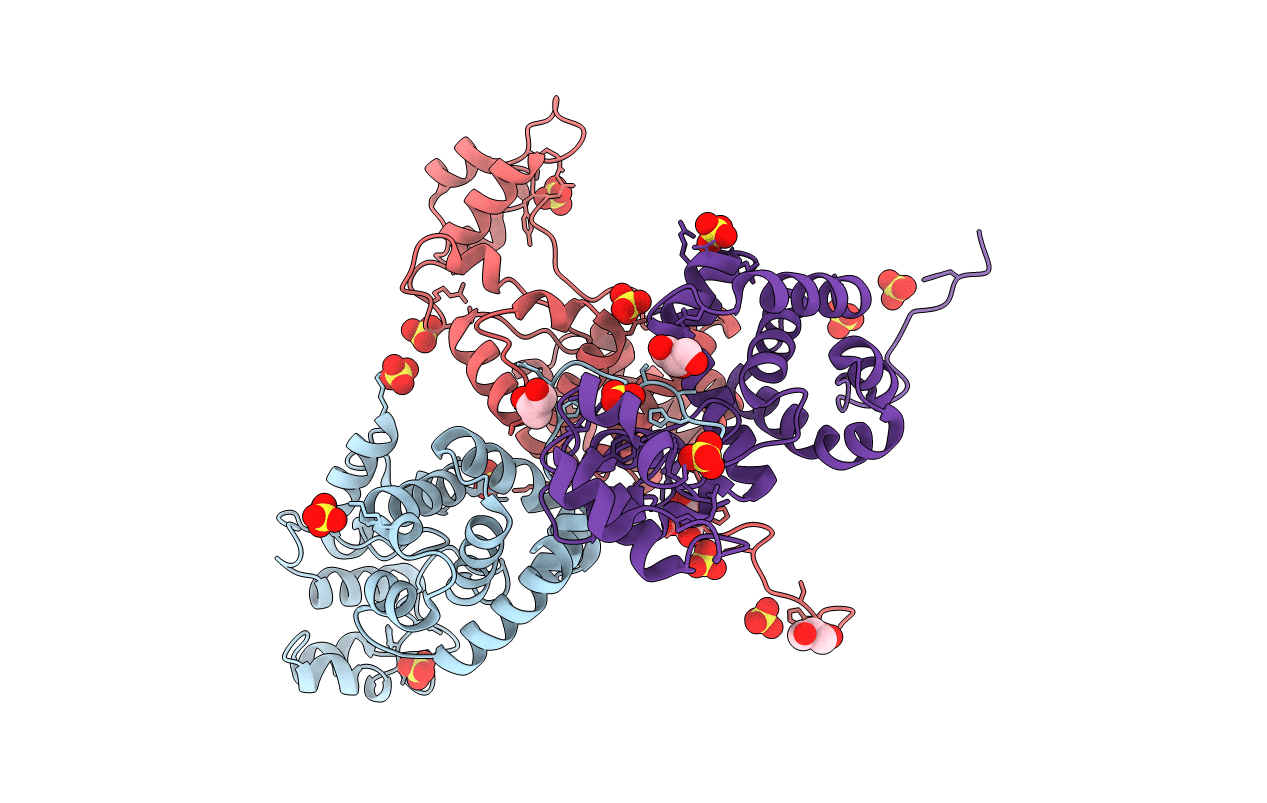
Deposition Date
2014-01-22
Release Date
2014-03-19
Last Version Date
2024-02-28
Entry Detail
PDB ID:
4OK7
Keywords:
Title:
Structure of bacteriophage SPN1S endolysin from Salmonella typhimurium
Biological Source:
Source Organism:
Salmonella phage SPN1S (Taxon ID: 1125653)
Host Organism:
Method Details:
Experimental Method:
Resolution:
1.90 Å
R-Value Free:
0.23
R-Value Work:
0.20
Space Group:
P 21 21 21


